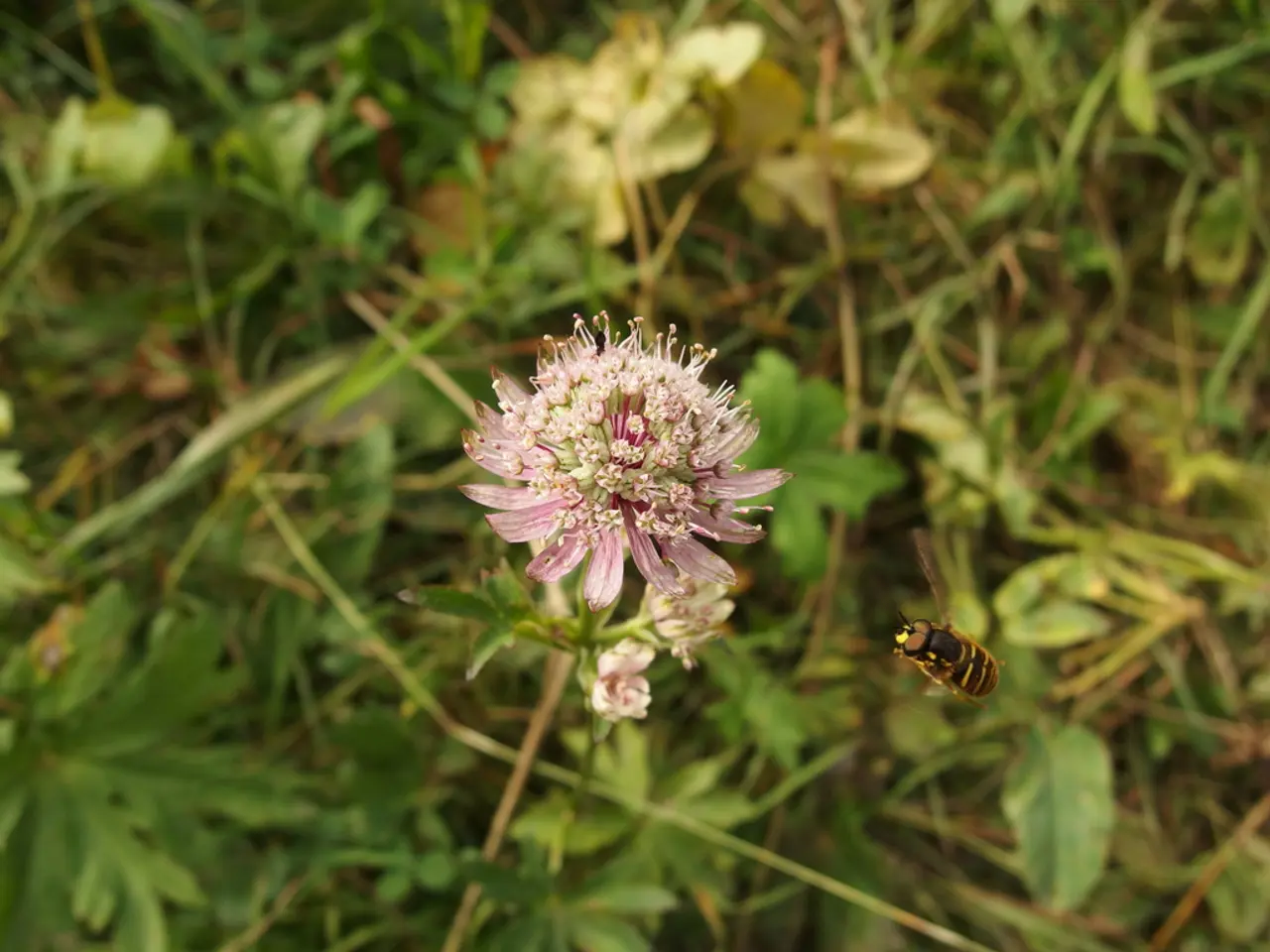Utilizing Neem Oil in Gardening: 3 Superior Uses as a Gardening Companion, Plant Savior, and Pest Eradicator - Uncovering Why Neem Oil ensures Success!
Neem oil, derived from the fruit and seeds of the neem tree (Azadirachta indica), offers a natural and organic pest control solution for gardeners. This versatile agent works as a broad-spectrum pesticide, targeting over 200 species of plant-feeding insects, such as aphids, spider mites, leafminers, mealybugs, thrips, Japanese beetles, and cabbage loopers [1][2].
The primary active compound in neem oil, azadirachtin, acts as an insect growth regulator and feeding deterrent. When pests ingest neem oil, it disrupts their hormonal systems that control molting, growth, and reproduction, effectively preventing the development of larvae into adults and reducing pest populations over time [1]. Additionally, neem oil acts as a repellent and can suffocate soft-bodied insects like aphids and mites when applied directly [1][2].
Using neem oil in the garden provides a safer, natural alternative to synthetic pesticides, reducing the risk of toxicity and environmental harm. Neem oil supports integrated pest management (IPM) strategies by targeting pests without indiscriminately killing beneficial insects [2][1]. Furthermore, its antiseptic and medicinal properties contribute additional advantages beyond pest control.
To ensure effective use of neem oil, it should be diluted in water with a mild soap as an emulsifier. A typical dilution is around 1 tablespoon per gallon of water. This mixture can be sprayed on plants to deter and reduce pest infestations [4]. It is essential to follow guidelines for use to avoid smothering leaves and blocking airflow and photosynthesis in leaf cells [3].
Neem oil solutions can be used at any point in the life cycle of a pest, making it a versatile tool in the gardener's arsenal. However, it may take time to see an improvement in plant health after using neem oil, and the effectiveness may wear off after a few days if the garden gets hit by heavy rain [5].
In summary, neem oil provides an effective, multi-faceted organic pest control method that disrupts insect life cycles and deters feeding, while offering gardeners a safer, natural alternative to chemical pesticides with added medicinal benefits. A steadfast, patient approach and weekly applications are required for optimal effectiveness. Neem oil can be used on trees with eggs on leaves as well as on houseplants with active infestations of pests. During the growing season, neem oil should be applied every 7-10 days. Additionally, neem oil can be used as a fungicide for several fungal diseases, including powdery mildew, fire blight, verticillium wilt, black spot, leaf spot, anthracnose, and rust.
References:
[1] Neem oil: An eco-friendly pesticide for organic gardening. (2021). Organic Authority. Retrieved from https://www.organicauthority.com/organic-food-recipes/neem-oil-eco-friendly-pesticide-organic-gardening/
[2] Neem oil: The natural pest control solution. (2021). Mother Earth News. Retrieved from https://www.motherearthnews.com/organic-gardening/neem-oil-zmaz1006zmaz
[3] How to use neem oil in the garden. (2021). Gardener's Path. Retrieved from https://www.gardenerspath.com/plant-disease/how-to-use-neem-oil-in-the-garden.html
[4] How to make a neem oil spray for plants. (2021). The Spruce. Retrieved from https://www.thespruce.com/how-to-make-a-neem-oil-spray-for-plants-3120000
[5] Neem oil: Benefits, uses, and side effects. (2021). Healthline. Retrieved from https://www.healthline.com/health/neem-oil
Incorporating neem oil, derived from the neem tree, into a home-and-garden lifestyle can offer a safer, natural pest control solution for gardening. By using neem oil in the growing season every 7-10 days, gardeners can support integrated pest management strategies, targeting pests without harming beneficial insects and even contributing additional medicinal benefits. This versatile agent acts as an insect growth regulator and feeding deterrent, providing a multi-faceted organic pest control method that can be used on trees with eggs on leaves as well as on houseplants with active infestations of pests, such as aphids, spider mites, leafminers, mealybugs, thrips, Japanese beetles, and cabbage loopers.






